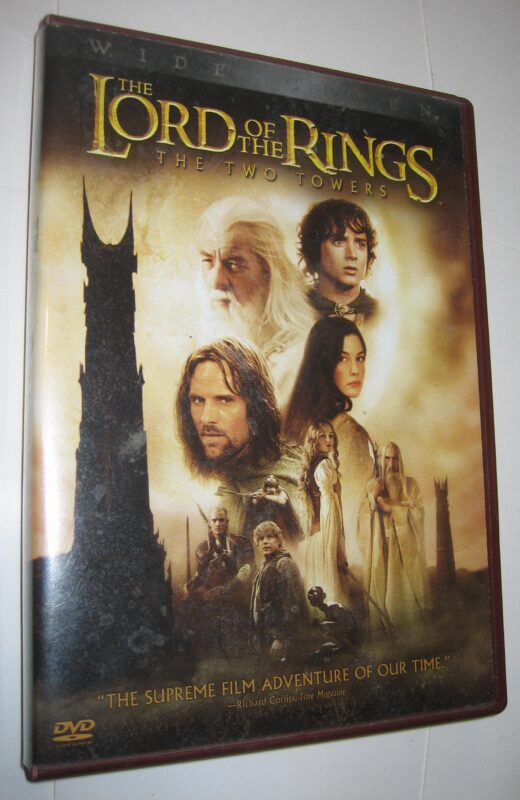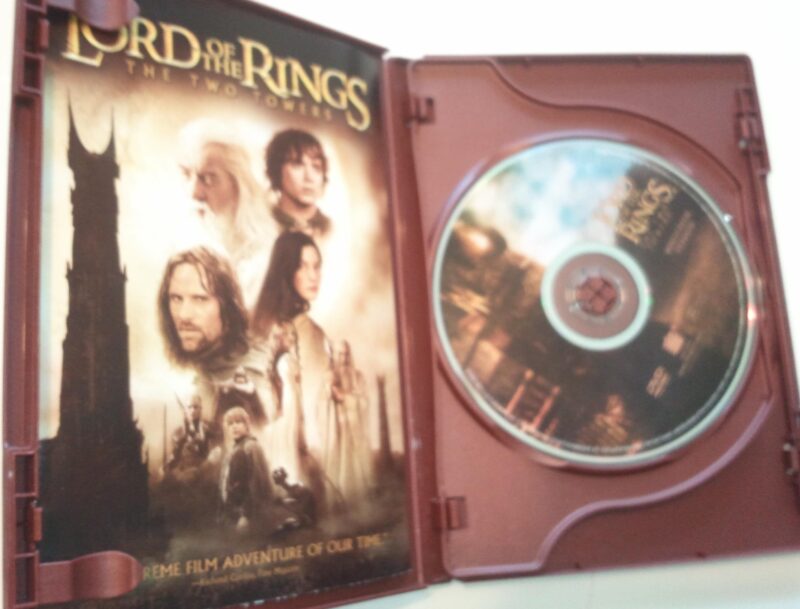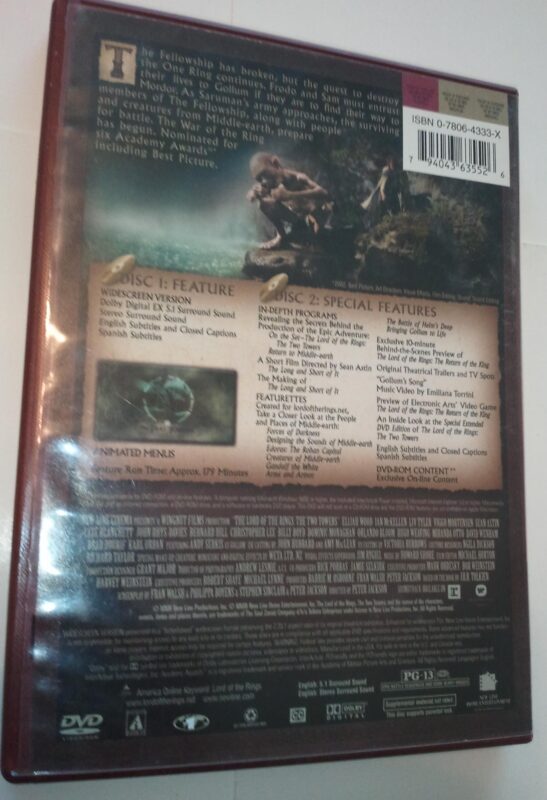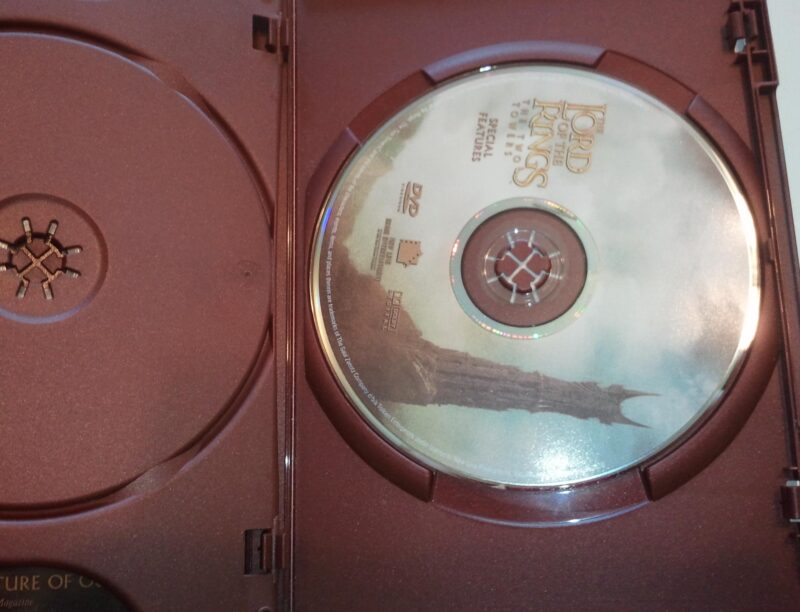Description
The Lord of the Rings: The Two Towers (Widescreen Edition) (2002)
Elijah Wood (Actor), Sir Ian McKellen (Actor), Peter Jackson (Director, Producer, Writer)
Rated: PG-13
Format: DVD
In the part second of the Tolkien trilogy, Frodo Baggins and the other members of the Fellowship continue on their sacred quest to destroy the One Ring–but on separate paths. Their destinies lie at two towers–Orthanc Tower in Isengard, where the corrupt wizard Saruman awaits, and Sauron’s fortress at Barad-dur, deep within the dark lands of Mordor.
The Lord of the Rings: The Two Towers is a seamless continuation of Peter Jackson’s epic fantasy based on the works of J.R.R. Tolkien. After the breaking of the Fellowship, Frodo (Elijah Wood) and Sam (Sean Astin) journey to Mordor to destroy the One Ring of Power with the creature Gollum as their guide. Meanwhile, Aragorn (Viggo Mortensen), Legolas (Orlando Bloom), and Gimli (John Rhys-Davies) join in the defense of the people of Rohan, who are the first target in the eradication of the race of Men by the renegade wizard Saruman (Christopher Lee) and the dark lord Sauron. Fantastic creatures, astounding visual effects, and a climactic battle at the fortress of Helm’s Deep make The Two Towers a worthy successor to The Fellowship of the Ring, grander in scale but retaining the story’s emotional intimacy. These two films are perhaps the greatest fantasy films ever made, but they’re merely a prelude to the cataclysmic events of The Return of the King.
It’s hard to know where to begin in articulating a coherent summary of so spectacular an epic as Peter Jackson’s rendering of Tolkein’s masterpiece. Perhaps the most incisive comment I can make is that, having been a fan of “The Lord of the Rings” since I first read the trilogy nearly 35 years ago, I’m impressed by Jackson’s fidelity to the spirit of the original literary work.
“The Two Towers” is a very different kind of film than its predecessor. Don’t expect the intimacy of “The Fellowship of the Ring”; the evolution of the story precludes it. The dissolution of the Fellowship scattered the principal characters of the first film into three distinct sub-plots: Merry (Dominic Monaghan) and Pippin (Billy Boyd), whose capture by the Uruk-Hai takes them into Fangorn Forest and their ultimate influence on the fate of Saruman (Christopher Lee); Legolas (Orlando Bloom), Gimli (John Rhys-Davies), and Aragorn (Viggo Mortensen), who re-unite with a resurrected Gandalf (Ian McKellan) in the climactic battle of Helm’s Deep; and Frodo (Elijah Wood) & Sam (Sean Astin), who continue their quest to destroy the Ring at Orodruin (ably played by Mount Doom) in Mordor. That’s a lot of threads to weave into the overall tapestry of the story, and it necessarily calls for some fairly abrupt and rapid scene changes. The action is so fast-paced that you will barely have time to catch your breath.
One of the most personally meaningful aspects of the film — and so far, it has been true of both “The Fellowship of the Ring” and “The Two Towers” — is Jackson’s uncompromising adherence to Tolkein’s vision of the timelessness of the story itself. The author was determined NOT to write a story that served as an allegory for any of the current events of his time, but rather hoped to address much broader issues that are rooted in the fundamentals of human nature. In so doing, the trilogy has remained relevant to the human condition in a way that transcends nationalities, ethnicities, and the various idiosyncratic cultural zeitgeists of any of the historical periods it has spanned. I find real personal relevance in Aragorn’s struggle with his own destiny. It’s not a predetermined kind of destiny, as in “fate”, but rather the self-determined destiny of one who follows his heart and his own integrity. Ditto for Eowyn (Miranda Otto), whose struggle to fulfill her desire for valor in the service of good is established in “The Two Towers”, and will culminate in the final installment, “The Return of the King”.
But Jackson’s triumph runs much deeper than his artistry in character development; many great films share that characteristic. It is his mastery in the use of surpassing technological innovation as an aid in the storytelling rather than as an end in itself that raises the bar for all subsequent films. His combination of digital, fabricated, and natural scenery in creating the world of Middle Earth is simply breathtaking. The battle scenes are terrifying without being overwhelming in their reliance on gratuitous violence or gruesome bloodshed. [I will allow my daughters (8 and 12 years of age) to watch the films, and I am probably more protective of their sensibilities than most parents I know.] And Jackson’s creation of the creature Gollum (Andy Serkis) is without equal or precedent in filmmaking history. Gollum is more than simply “believable”; he is real. His role in the story is pivotal, and it was Jackson’s test of fire to create an all-digital character whose range of expression and movement could carry such an important part in the story. It is a masterpiece of moviemaking art.
0-892963883
Few stains on back of dust jacket, otherwise near mint. 1st printing.
Related products
-
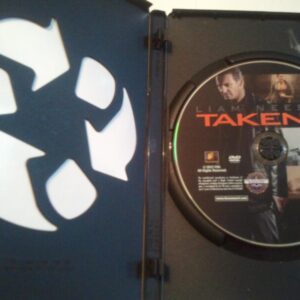

Taken 2 DVD Liam Neeson Famke Janssen Maggie Grace Widescreen
$29.99 Add to cart -
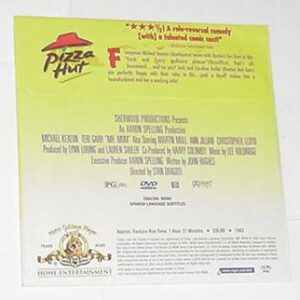
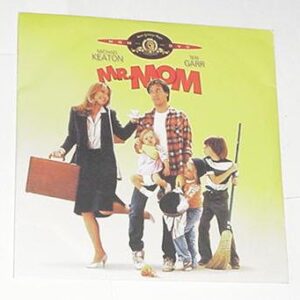
Mr. Mom DVD Pizza Hut Edition Michael Keaton John Hughes Classic!
$39.99 Add to cart -
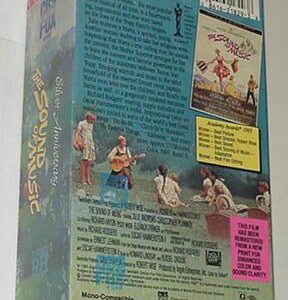
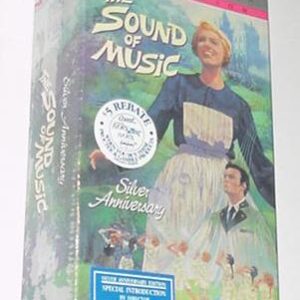
Sound of Music VHS Silver Anniversary Set Remastered w Intro by Robert Wise SEALED
$49.99 Add to cart -
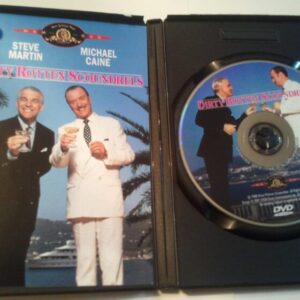
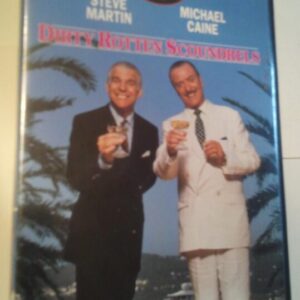
Dirty Rotten Scoundrels DVD Steve Martin Michael Caine Widescreen Dolby Surround
$14.99 Add to cart
